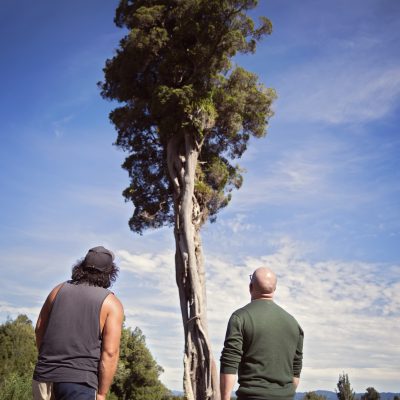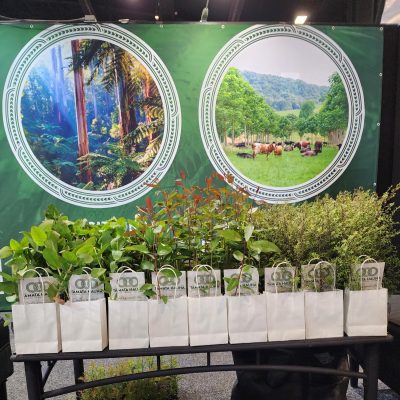Right tree for the right location
All species that Tāmata Hauhā work with can be registered under the Emissions Trading Scheme (ETS) if planted on eligible land and planting designs comply with ETS rules.
Tāmata Hauhā works with 23 different species that whānau and landowners can choose from. We have listed some of the species below:
Tōtara
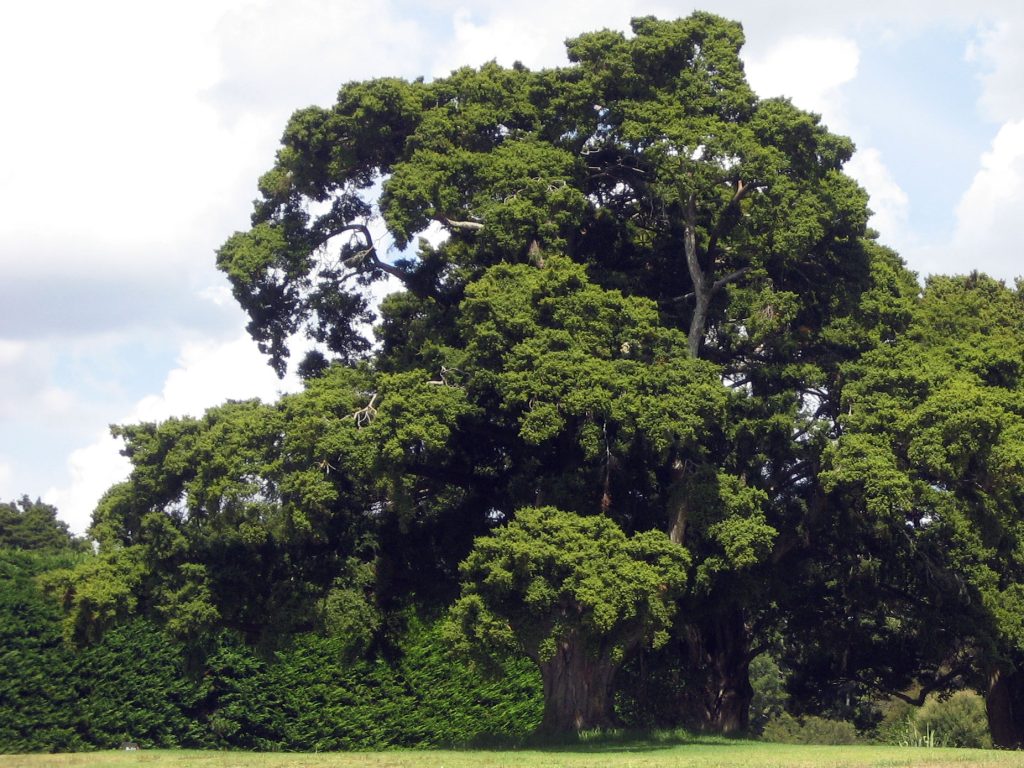
Tōtara
Tōtara is a native conifer and member of the podocarp family, with two species growing into large trees, Podocarpus Tōtara and P. hallii.
These species naturally hybridise, with P. hallii being predominant in Southland and Westland. Unlike other New Zealand podocarps, Tōtara is a light-demanding pioneer species and is relatively fast growing. Tōtara has an extensive natural distribution range through much of New Zealand’s lowland and lower montane forest, to about 600m elevation in the North Island and 500m elevation in the South Island, occupying both alluvial plains and hill slopes. Natural Tōtara grows as a canopy emergent tree and can grow very large and live for over 1000 years. Tōtara has an extensive lateral root system that often spreads further than the crown, along with abundant obliquely-descending peg roots. Tōtara can produce new root systems after flooding and roots can develop from the trunk where silt has been deposited. Tōtara seedlings readily develop a vigorous fibrous root system. Tōtara regeneration is common in pastoral hill country in Northland, Waikato, King Country, Horowhenua and Wairarapa in the North Island and Nelson, Kaikōura and in Westland in the South Island.
Mānuka
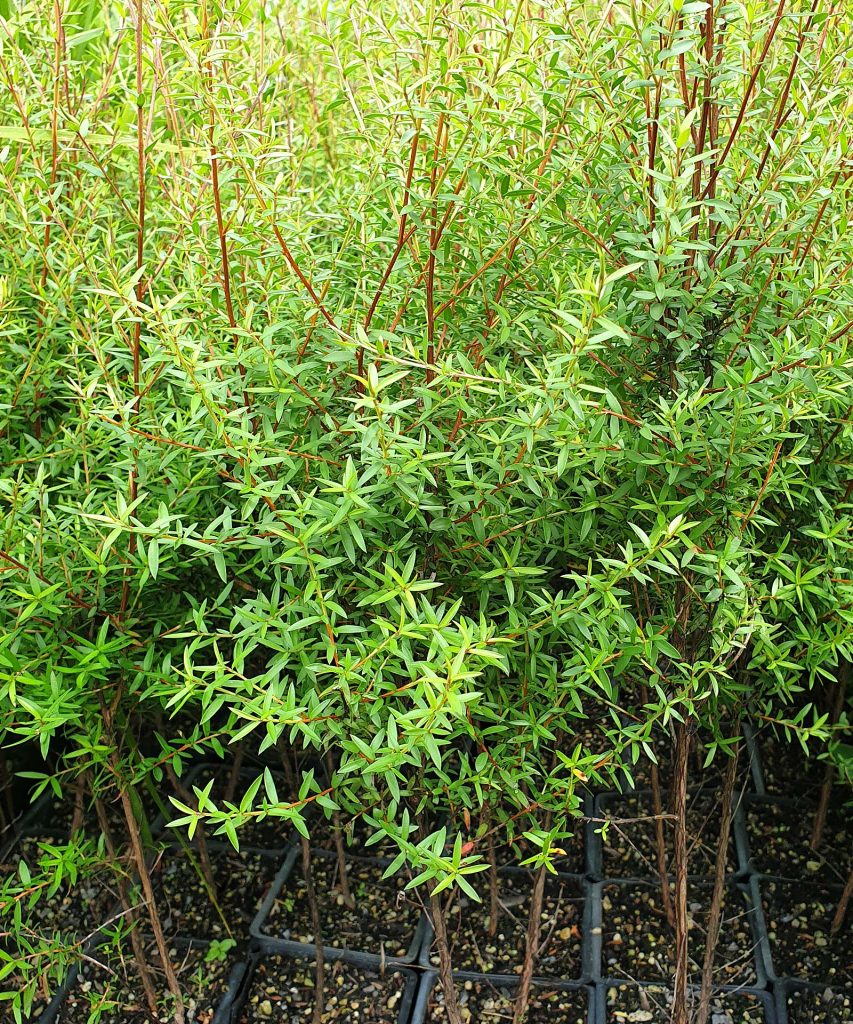
Mānuka
A main product of the Mānuka tree Leptospermum scoparium is, of course, nectar which bees make into honey.
New Zealand honey exports have experienced an exponential compound growth rate in excess of 20 per cent a year over the last 10 years. This makes it one of the fastest growing land-based industries, with the main driving factor being the increasing prices and demand for Mānuka honey. With international acceptance and understanding of the medical opportunities which manuka has, there is a justifiable expectation that the growth limits are sustainable, if managed well, for some time yet. Prices for the honey range from $18 to over $130 a kilogram, depending on the activity rating of the honey. The term activity as it relates to Mānuka is used to describe its antibacterial activity. In the case of Mānuka this varies in scale with higher rated activity levels being used for medicinal products and have an increased price premium in the marketplace.
There is a wide range of products that use Mānuka honey including −
- Food and beverages
- Skincare, soaps and lotions
- Natural health products such as throat lozenges and cough medicines
- Medicinal products used to treat wounds and infections with the special anti-bacterial quality of Mānuka honey which been scientifically proven, mainly due to the research efforts of the late Dr Peter Molan and associates.
Tea tree oil, also well known for its medicinal and therapeutic properties, can be derived from Mānuka foliage. An average manuka stand could potentially produce two to four tonnes a year per hectare on a bi-annual managed basis. Gross income can be in excess of $100 a tonne for foliage. If the foliage is harvested after flowering, a stand may take advantage of honey and oil crops.
Kauri
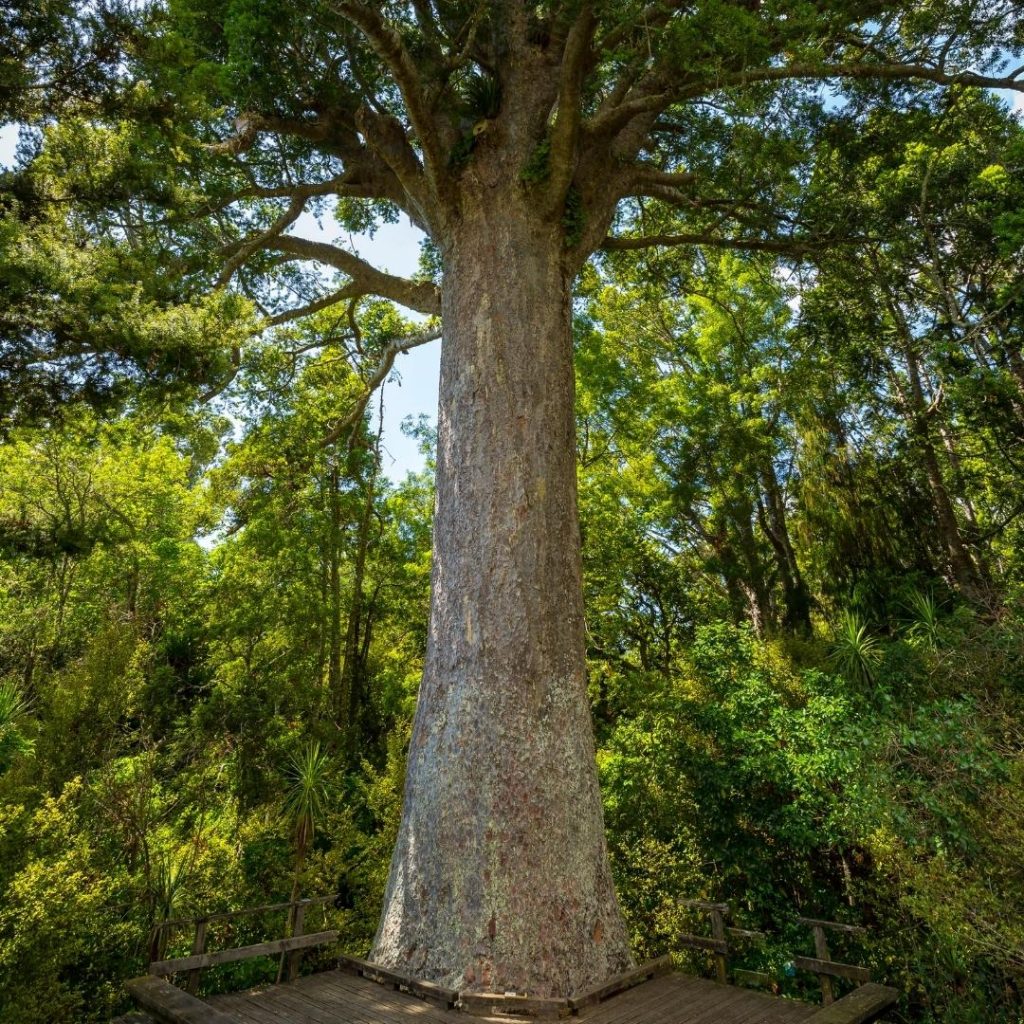
Kauri
Kauri (Agathis australis) has long been regarded as the Lord of the Forest, the dominant tree species of the natural rainforest in northern New Zealand, with diameters of 6m recorded.
Most kauri forests have been cleared and the small remaining areas in mature forest are now reserves. Kauri forms extensive root systems with both deep “peg” roots or “sinkers” that descend from lateral roots and provide anchorage, along with an extensive network of lateral roots and a mat of fine feeding roots. Fusion of lateral roots has been observed between adjacent trees in mature Kauri and stumps may consequently stay alive for considerable periods of time. Kauri prefers moist fertile soils and is not likely to survive on drought-prone infertile ridgetops. Application of fertiliser can improve growth where soils are infertile. Mycorrhizal associations are found in natural Kauri forests. These have been investigated and may improve phosphate absorption by roots. Kauri “should be planted on open sites only if these are sheltered and warm”. Because nursery raised seedlings tend to have poorly developed root systems, planted seedlings tend to be highly susceptible to drought for the first two years after planting. Site preparation needs to be good and competing plants removed for up to 5 years. Small seedlings require shade and shelter, but saplings prefer full sunlight. Side shading is recommended for establishing Kauri, such as provided by a Mānuka nurse crop established before line planting of Kauri. This protects young plants from wind and frost. However, releasing may be necessary to ensure the Kauri is not overtopped until at least 1-2m high.
Rimu
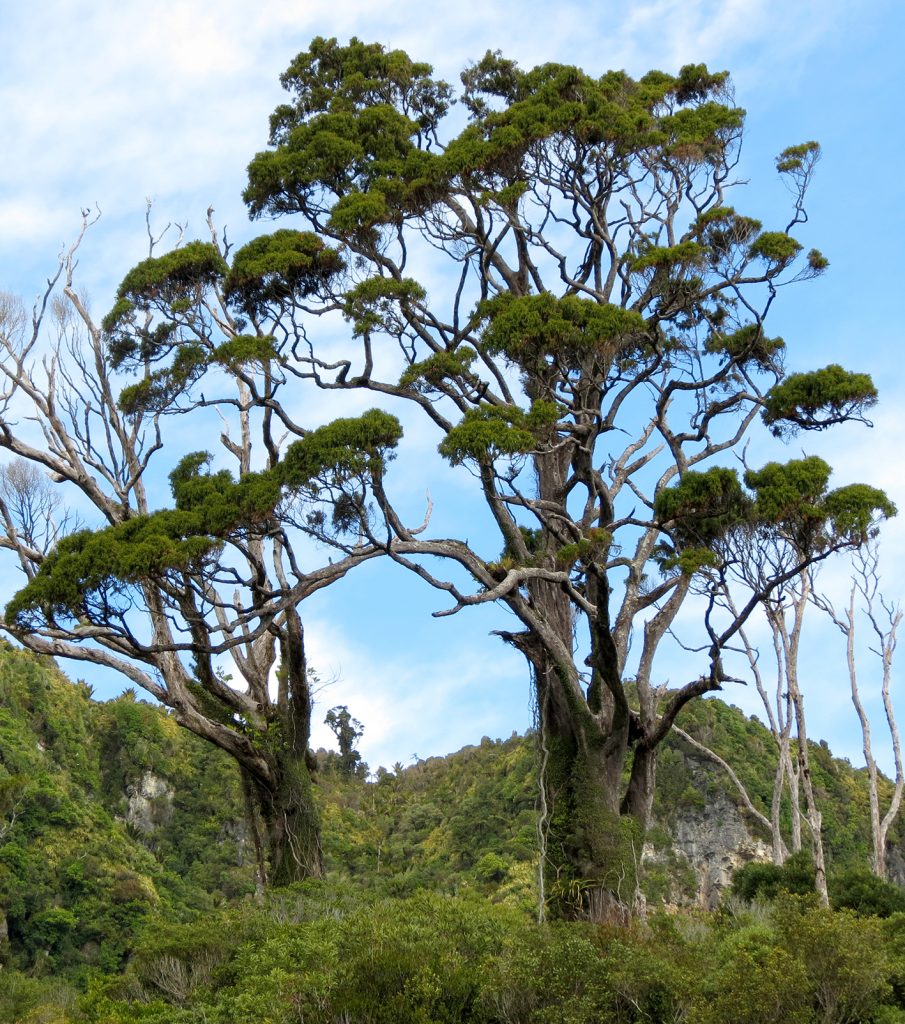
Rimu
Dacrydium cupressinum, commonly known as Rimu, is a large evergreen coniferous tree endemic to the forests of New Zealand. It is a member of the southern conifer group, the podocarps.
Rimu grows throughout New Zealand, in the North Island, South Island and Stewart Island/Rakiura. This species is common in lowland and montane forest. Although the largest concentration of trees is now found on the West Coast of the South Island, the biggest trees tend to be in mixed podocarp forest near Taupō. Rimu is a slow-growing tree, eventually attaining a height of up to 50m, although most surviving large trees are 20 to 35m tall. It typically appears as an emergent from mixed broadleaf temperate rainforest, although there are almost pure stands (especially on the western coast of the South Island). There are historical accounts of exceptionally tall trees, 61m, from dense forest near National Park in the central North Island, now destroyed. Its lifespan is approximately 800 to 900 years. The straight trunk of the Rimu is generally 1.5m in diameter but may be larger in old or very tall specimens. The leaves are spirally arranged, awl-shaped, up to 7mm long on juvenile plants, and 1mm wide; and 2 to 3mm long on mature trees. It is dioecious, with male and female cones on separate trees; the seeds take 15 months to mature after pollination. The mature cones comprise a swollen red fleshy scale six to ten mm long bearing one (rarely two) apical seeds 4mm long. The seeds are dispersed by birds which eat the fleshy scale and pass the seed on in their droppings; the cones are an important food resource for some species, particularly the Kākāpō, whose breeding cycle has been linked to the fruiting cycle of the tree. Māori originally used the resinous heartwood of Rimu (called māpara or kāpara) for wooden items such as heru (combs) and fernroot beaters. Historically, Rimu and other native trees such as Kauri, Mataī and Tōtara were the main sources of wood for New Zealand, including furniture and house construction. However, many of New Zealand’s original stands of Rimu have been destroyed, and recent government policies forbid the felling of Rimu in public forests, though allowing limited logging on private land. Pinus radiata has now replaced Rimu in most industries, although Rimu remains popular for the production of high-quality wooden furniture. There is also limited recovery of stump and root wood, from trees felled many years before, for use in making bowls and other wood turned objects. The inner bark can also be used to treat burns and cuts.
Kahikatea
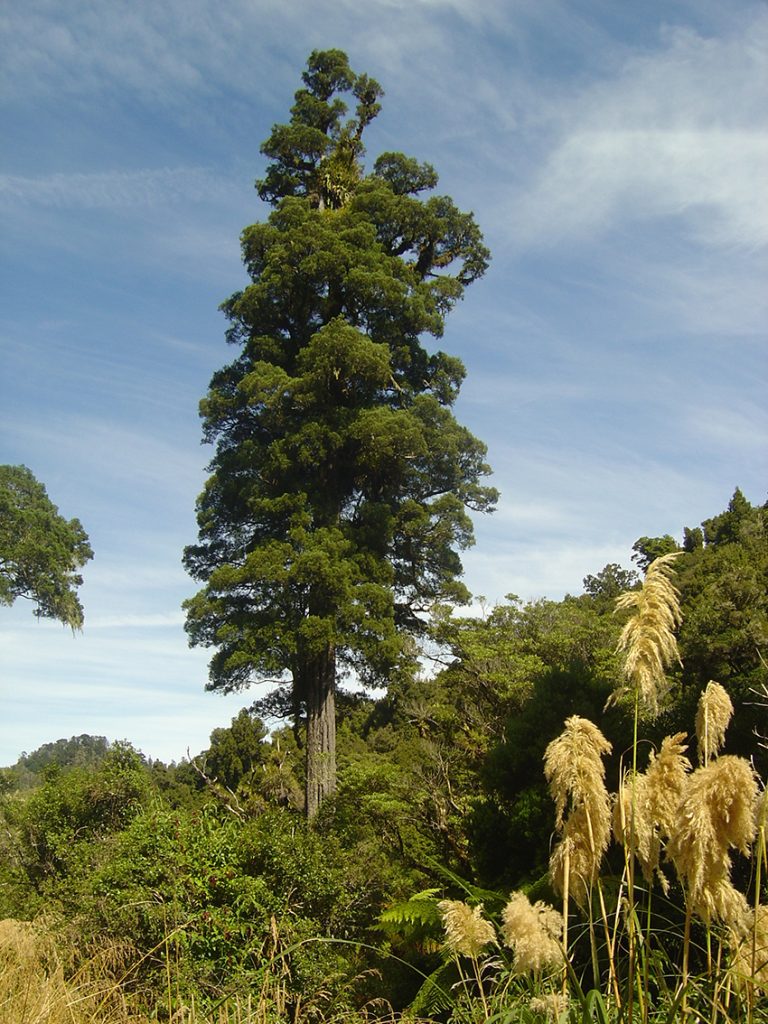
Kahikatea
Dacrycarpus dacrydioides, commonly known as Kahikatea and white Pine, is a coniferous tree endemic to New Zealand. A podocarp, it is New Zealand’s tallest tree, gaining heights of 60 m over a life span of 600 years.
It was first described botanically by the French botanist Achille Richard in 1832 as Podocarpus dacrydioides and was given its current binomial name Dacrycarpus dacrydioides in 1969 by the American botanist David de Laubenfels. Analysis of DNA has confirmed its evolutionary relationship with other species in the genera Dacrycarpus and Dacrydium. In Māori culture, it is an important source of timber for the building of waka and making of tools, of food in the form of its berries, and of dye. Its use for timber and its damp fertile habitat, ideal for dairy farming, have led to its decimation almost everywhere except South Westland. Kahikatea seeds have fleshy structures called receptacles attached to them, which encourage birds such as Kererū and Tūī to eat them and disperse the seeds. The water storage ability of these structures may also act to protect seeds from drying out. It supports many smaller plants in its own branches, which are called epiphytes; 100 different species have been recorded on one tree alone. As a conifer, the Kahikatea has no flowers and instead has cones. Male cones, which occur on different trees to female ones, are 1cm long and rectangular. The pollen is a pale-yellow colour and has a three-pored or trisaccate shape that is distinctive in the New Zealand flora and so can be identified easily. The fruit is highly modified with a yellow-orange fleshy receptacle that is 2.5–6.5mm long. The purple-black seed is roughly spherical and 4–6mm in diameter. Both the seed and the ovary are covered with a thin layer of wax. The Kahikatea has a diploid chromosome count of 20.
Cypresses
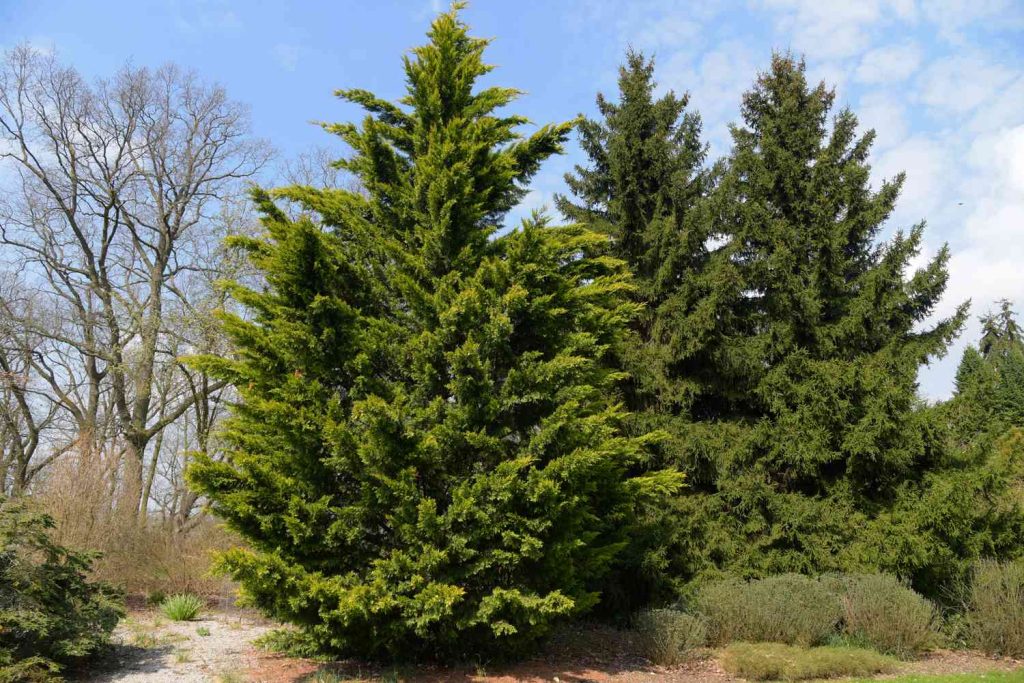
Cypresses
Cypresses are well-known softwoods growing in New Zealand, especially Cupressus macrocarpa (‘macrocarpa’) but increasingly other species including Cupressus lusitanica (Mexican cypress) and some cypress hybrids. Cypress timber has long been a Kiwi favourite because of its versatility for indoor and outdoor uses, attractive appearance, natural durability above ground and ease of working.
Cypress species are Northern Hemisphere conifers belonging to the Cupressaceae family. Their versatile timber is decorative, durable and strong. Some cypresses such as ‘macrocarpa’ have been widely grown and utilised in New Zealand for many decades. Four species and two groups of hybrids are considered to have most potential in New Zealand. The four species are: Cupressus macrocarpa (‘macrocarpa’), C. lusitanica, (Mexican cypress), Chamaecyparis lawsoniana (Lawson cypress) and C. torulosa (Himalayan cypress). Promising hybrids have been produced from crossing (i) C. macrocarpa x Chamaecyparis nootkatensis and (ii) C. lusitanica x Ch. nootkatensis – this group includes the Ovensii hybrid (Ovens cypress). Cypresses provide growers with a versatile timber that can be used in a range of situations (from decorative uses to those requiring durable and strong timber). Scion, with industry partners, has invested in breeding trials over several decades to identify species with the most potential in New Zealand, and which have greater resistance to cypress canker. New selections are being trialled and will support the next generation of plantings. Growers should always source stock, in particular C. macrocarpa, from canker-resistant selections.
Blackwoods
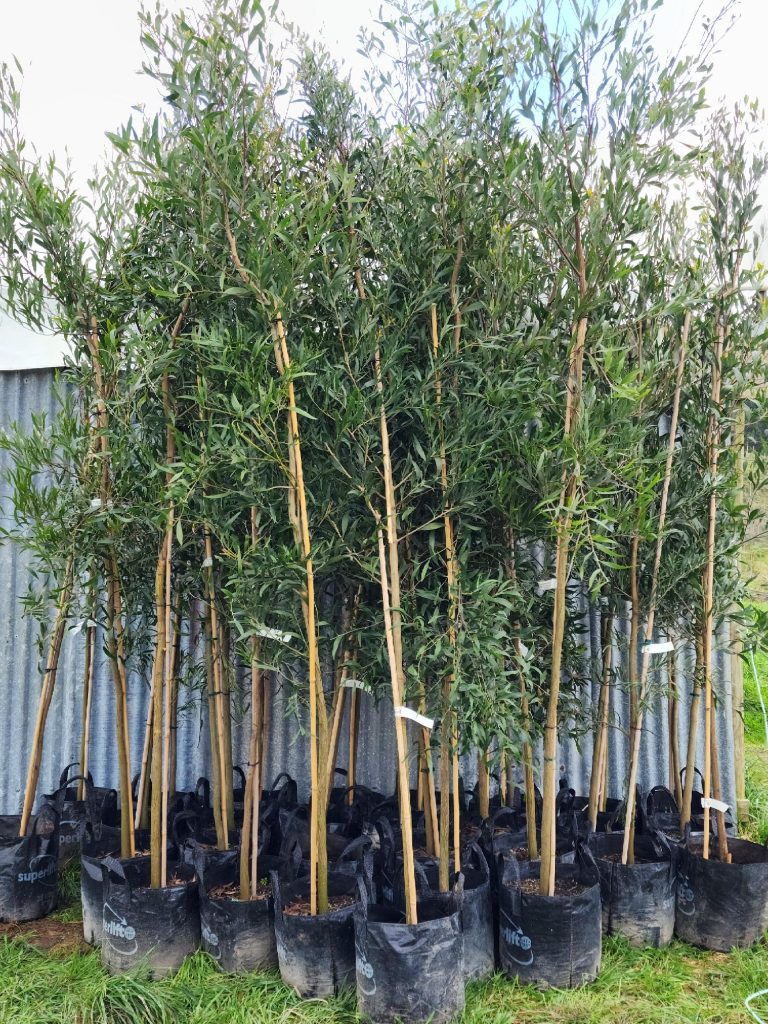
Blackwoods
Blackwood (“Tasmanian blackwood”) is a relatively fast-growing Acacia species usually planted for high quality hardwood timber. However, because blackwood tends to have poor form it requires repeated form pruning for timber production.
Grown for erosion control in pasture, blackwood becomes stock resistant after 4-5 years and will grow into an attractive, spreading evergreen tree. Because it can grow on poor soils it is well suited for erosion control in gullies and steep slopes. Where used for gully stabilisation, blackwood develops an extensive root system that suckers into new trees. It also fixes atmospheric nitrogen into the soil, improving fertility. Because it can spread by seed and root sprouts, blackwood is not suitable for riparian planting. On favourable sites blackwood will reach up to 40 metres high and 1 m in diameter, living for up to 200 years. Although it tolerates skeletal soils and exposure, when grown for timber production it requires shelter and deep moist soils.
Eucalypts
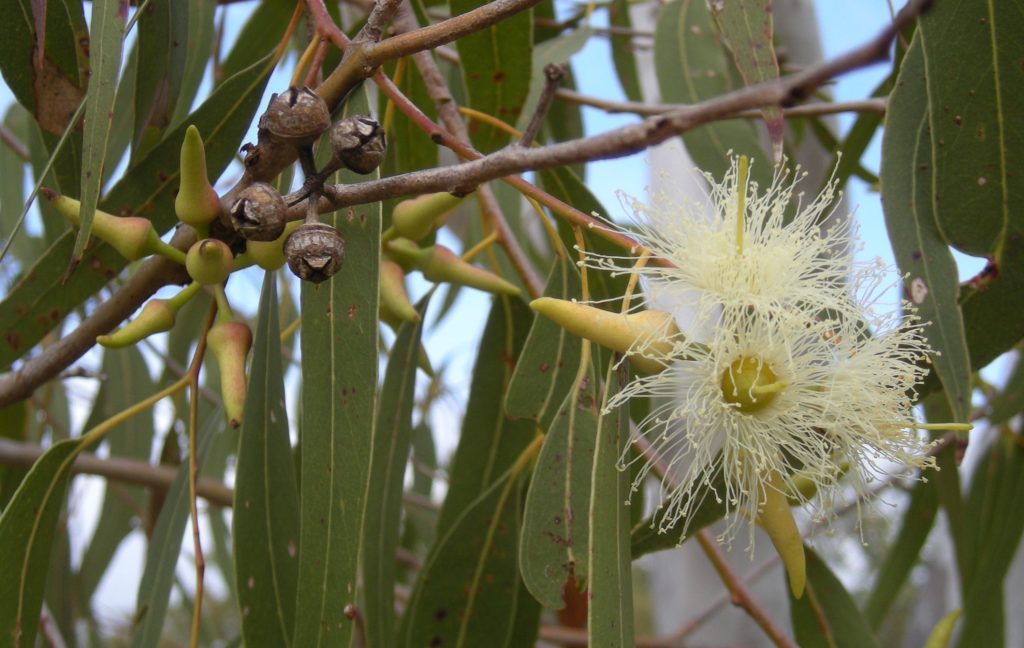
Eucalypts
Eucalypts are moderate to fast growing varieties of gum trees, with some varieties out-performing radiata pine in both height and diameter. Varieties such as mountain ash forests store more carbon than any other known species in New Zealand. However for forests that are under 100 ha, the Ministry for Primary Industries suggest that Eucalypts store carbon about 80% as fast as pine.
The rapid initial growth rates, structure, and density of eucalypts makes them ideal for a range of uses, some of which can be integrated with carbon forestry. These include: agroforestry (trees grown around or amongst crops or animals), apiculture (honey production), target diameter harvesting (selective removal), floristry (floral industry), rongoā Māori, pharmaceuticals, as well as land treatment of waste water and solid waste. Unlike Pine, eucalypts provide feed and habitat to many of our indigenous bird species, as well as being attractive to honeybees as most species provide nectar. The quantity and quality varies, but we are able to apply species that can be used for both carbon forestry and honey production. Whilst there are many attractive qualities of eucalypts, they are typically not as hardy as pine and require good management. In short, your localised climate will play a big part in the varieties suitable for your whenua. If you are interested in learning more, resources can be found through Farm Forestry New Zealand.
Redwood
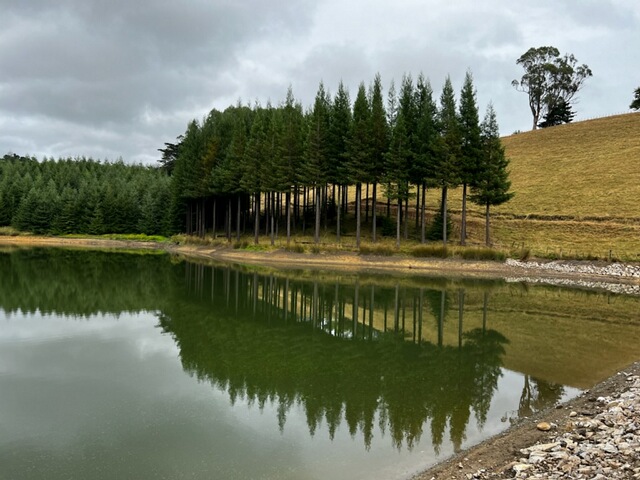
Redwood
Redwood – also known as ‘Coast’ or ‘Californian redwood’ (Sequioa sempervirens) – is a softwood well-suited to growing conditions in parts of New Zealand, evidenced by the redwood forests around Rotorua (established in 1901) and other early plantings. Commercial plantings have increased markedly in the 21st century, especially in the North Island, where growers see scope to supply international markets as the North American supply runs out.
Sequoia sempervirens (Coast or Californian redwood) is a long-lived, evergreen tree that is endemic to a narrow coastal strip from central California to southern Oregon. It was first introduced to New Zealand between 1860 and 1870, with more extensive plantings in the 1920s and 1930s. The 2000s have seen a substantial increase in plantings as redwood’s productivity and market potential have been recognised. Sequoia sempervirens performs best in areas with good summer rainfall including Northland, Waikato, Bay of Plenty and Taranaki in the North Island, and Nelson, Tasman and in well-drained soils of the West Coast in the South Island.
Japanese Cedar

Japanese Cedar
Cryptomeria japonica (Japanese cedar) is widely distributed in Japan, where it has been cultivated and utilised for centuries.
Small stands were planted in various parts of New Zealand during the 1860s-1870s, with further forest plantings between 1937-1955, often for ‘enrichment’ of logged indigenous forest. However, most plantings have been for horticultural shelterbelts, due to Cryptomeria’s high wind tolerance. Sometimes referred to as ‘Japanese redwood’ or ‘Sugi’, Cryptomeria grows well in parts of New Zealand where redwood also performs best, i.e., in areas of Northland, Waikato, Bay of Plenty, Taranaki, Nelson, Tasman and in well-drained soils of the South Island West Coast.
Poplars
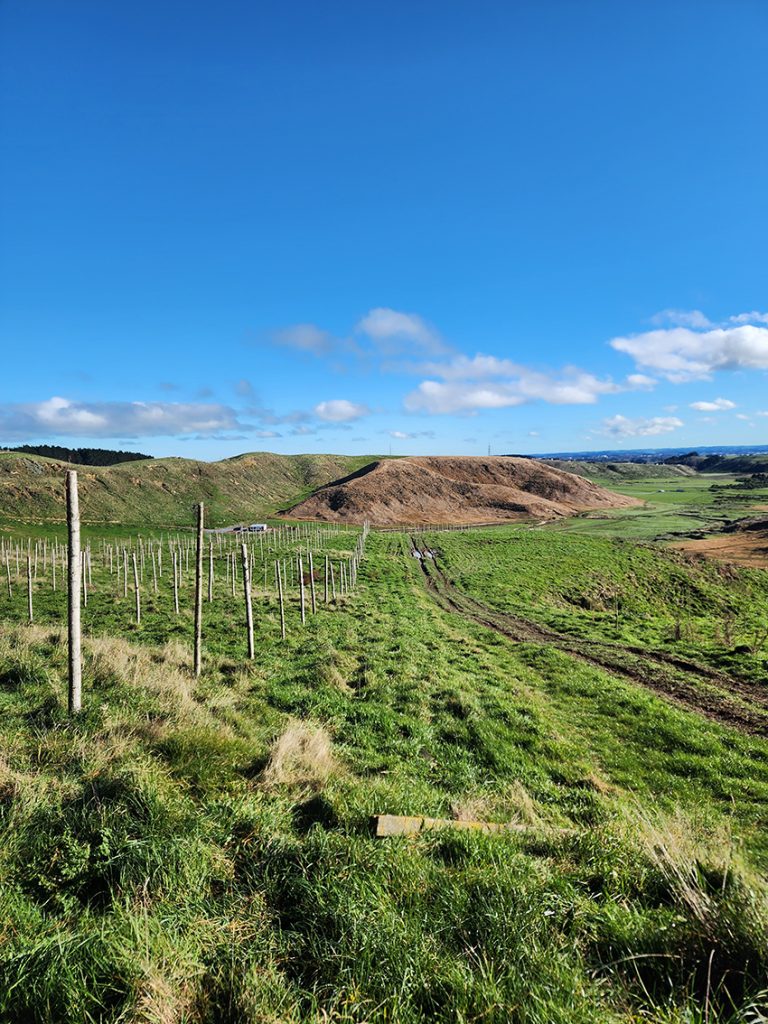
Poplars
Poplars originate through most of the temperate and colder zones of all Northern Hemisphere continents and are a major plantation and agroforestry species around the world.
They are deciduous hardwoods and are a versatile group of species or cultivars grown in New Zealand for erosion control, shelter, fodder, and timber. They are easily planted and propagated as clones, often hybrid cultivars. Clones with a range of traits are available to suit the diversity of sites where poplars are planted for soil conservation. They are a hardwood, and a wide range of cultivars are available to suit different site types. Some have denser wood and good form and are therefore also suited to timber production.
Paulownia
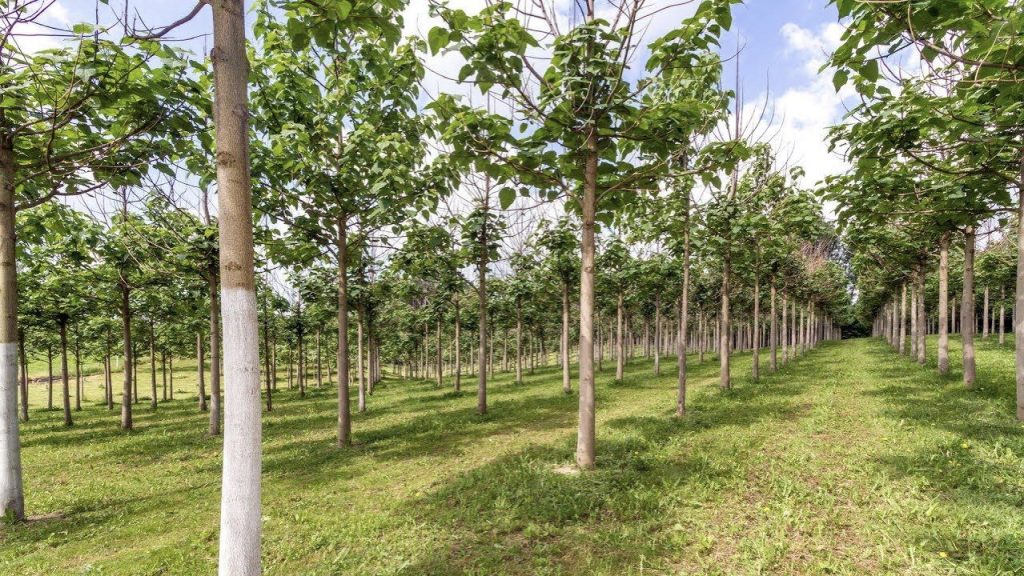
Paulownia
Paulownia elongata is one of the fastest growing trees on the planet. A one-year-old seedling can be 2m to 3m high at the end of the first summer and they seem to grow another 2m a year for a few years, before they slow down a little. They are known to grow to 3m in their first year having ornamental qualities due to their huge blue trumpets and dinner-plate-sized leaves.
The timber of a paulownia is uncommonly hard and dense for a fast-growing tree. Speedy trees, such as poplars and willows, usually have weak timber. When the tree is young, the wood is fleshy like a watermelon and then hardens into a first-class timber. In our climate, they need to be away from the coast, or at least sheltered, because their big leaves are ripped up by storms. They also need to be pruned regularly and managed for the puriri moth, which bore holes in the tree. However, paulownias produce a lot more than just timber. Each tree grows leaves equalling 100kg of dry matter per year. Even with 100 trees planted per hectare, there is no reduction in the grass growth underneath, and you can take advantage of all that extra feed growing up above. Underground, the trees are hard at work, sending roots out over 20m to capture nutrients. University of Mississippi research found paulownias reabsorb up to 75 percent of the nitrogen and nutrients that is missed by grass roots. Its environmental benefits however are not officially recognised in NZ. Overseer, the software used by the NZ farming industry to measure nutrients, hasn’t been programmed for paulownias, so farmers can’t officially claim their benefits. As with any tree, your localised climate, and in this case the wind factors will play a big part in determining if this species will be suitable for your whenua. Presently, our ability to supply these species would be delayed by a year on securing an agreement. An option to initially trial this species on your land is a possibility.
Oaks
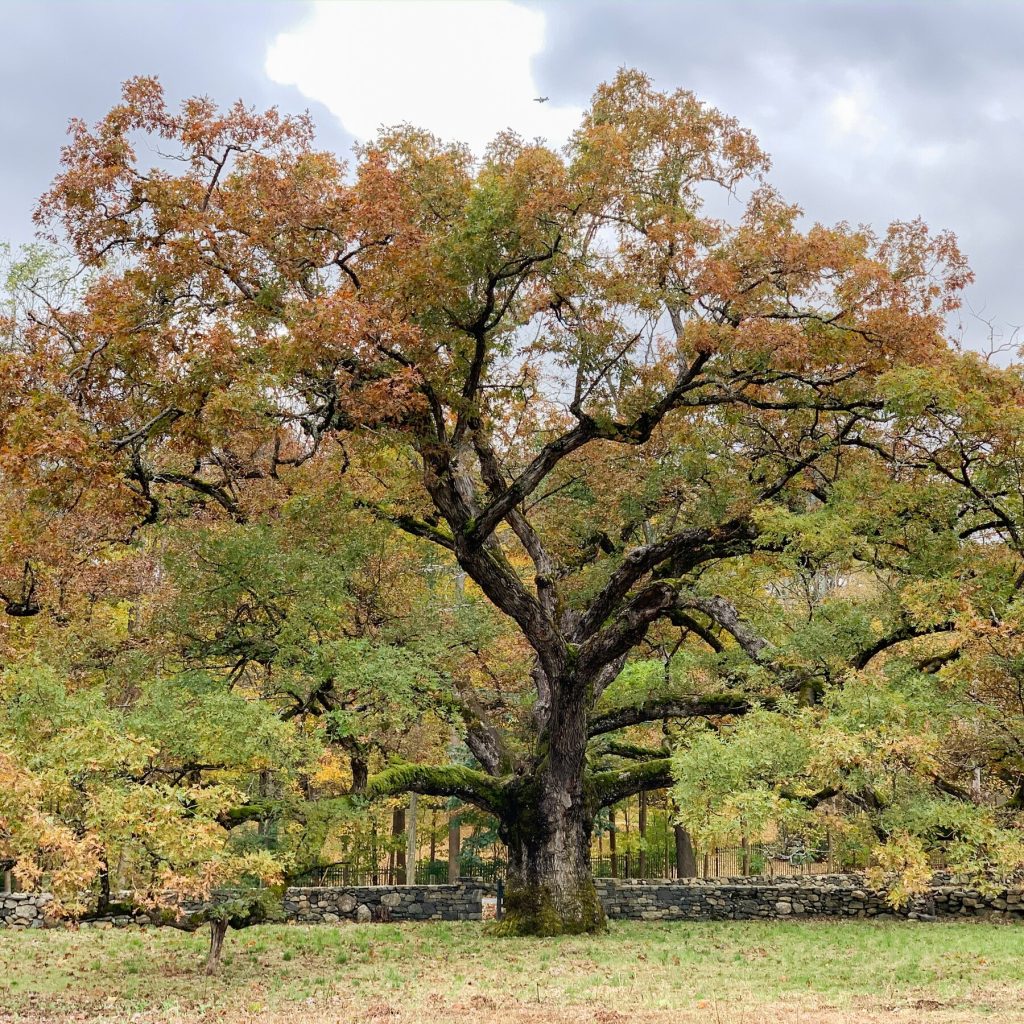
Oaks
An oak is a tree or shrub in the genus Quercus of the beech family, Fagaceae. There are approximately 500 extant species of oaks. The common name “oak” also appears in the names of species in related genera, notably Lithocarpus, as well as in those of unrelated species such as Grevillea robusta and the Casuarinaceae.
Oaks New Zealand formed in June 2018 to encourage the planting and utilisation of oak trees in New Zealand. Oak is an important timber species in the northern hemisphere and anecdotal information suggests many species grow faster in New Zealand than their countries of origin. Some initial trials of English oak were established about 70 – 80 years ago but little research and evaluation work has been done since. New Zealand has about 140 of the ~600 species of oaks found worldwide. Some species are commonly planted as farm and amenity trees. Many others are represented in small numbers in botanic gardens, arboretums and a few private collections. It is very difficult and expensive to import new oak genetics into New Zealand. Acorns must be imported through post-entry quarantine and spend up to 2 years there before they are given biosecurity clearance.
Radiata Pine
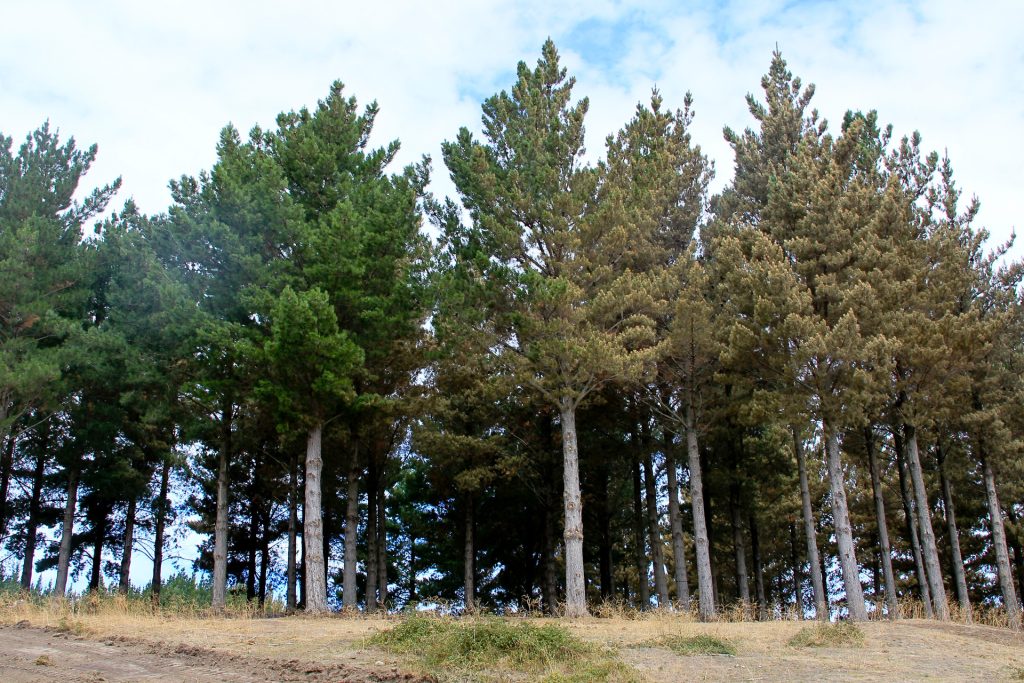
Pinus radiata (or ‘Pine’) is a very versatile evergreen conifer species native to southern California. It is the most widely planted pine in the world and the most popular commercial timber species in New Zealand.
It is easily managed; grows quickly; produces useful timber; makes strong wood pulp; growing well across a variety of soil types, including coastal sands, heavy clays, sub-alpine gravels and volcanic ash deposits. Such qualities and versatility highlight why it is used nearly everywhere in Aotearoa, unlike Paulownia and Eucalypts, which are selected for use on a site-specific basis. Due to the rapid milling of native timber in the 1900’s and the slow-growing nature of our own conifer species, pine was selected on its growth and use merits to replace native timbers for commercial timber. Since then, commercial investment and improvement programmes have continued. Through controlled cross-breeding, hybridisation and advanced plant propagation techniques, scientists have developed specific strains that are best adapted to particular climatic zones and soil types, are resistant to foliage diseases, and produce wood that is very durable. Managing pine plantations for timber involves thinning and pruning, depending on whether the trees are being grown for high-value saw logs, or as lower-quality logs. For Carbon farming thinning and pruning programmes are often less intensive – which often accounts for its distain. If considered for timber, trees will have a harvest age of 25–35 years, with final tree numbers being around 300 stems per hectare, as two thirds of the trees planted are usually cut down during the early stages of the growing cycle to make more room for the others. Thinning will also be an option for Carbon farming, with the felled trees potentially harvested as posts, poles or firewood. As a standalone species (and presuming no other complimentary farming activities are taking place) pine will likely provide landowners with the greatest carbon earning potential. However with any monoculture, the effect of such application is short-sighted. As such, and if used, Tāmata Hauhā will work with landowners to come up with a management programme that affords comfort as kaitiaki. Please note that pine seed can be spread by the wind, and would require good site selection and proactive management on our part.
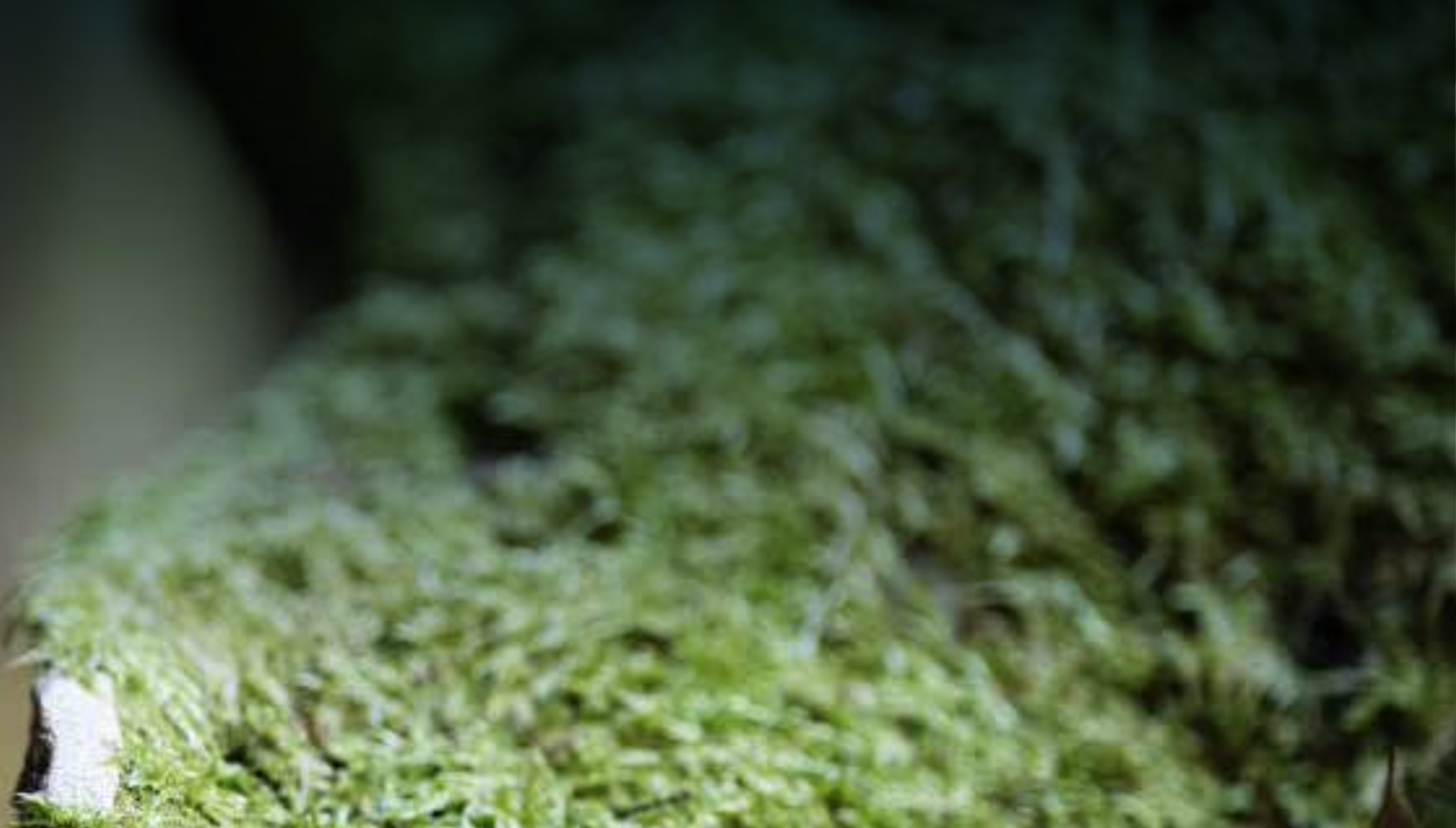
HE WHENUA, HE TĀNGATA, HE TAURIKURA
Restoring our land, strengthening our people, investing in our wellbeing
